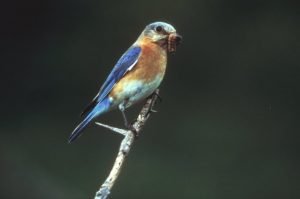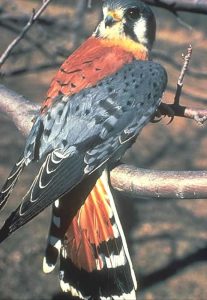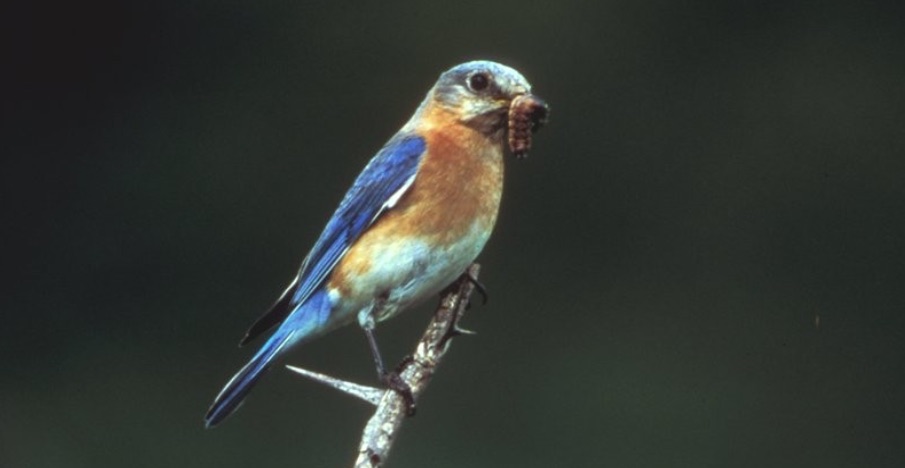
The cavity nesters at Iroquois NWR were successful in 2011. The eastern bluebird fledged 67 birds this year down only one from last year. This compares to the record high year of 2009 when 80 chicks fledged. The concern is that the attempted nestings were only 23 compared to 36 and 31 in 2009 and 2010. If this trend continues bluebirds could become more difficult to see around the Refuge. The Tree Swallows that share the bluebird boxes continue to be plentiful all around the Refuge area.
Fortunately an American kestrel used the nest box equipped with a camera behind the Headquarters building again this year. This allowed us to watch the undisturbed nesting activity of these birds from Mid-April until the last bird fledged July 11th . They made us very nervous this year as they laid the first egg then waited an unusually long time to lay any more eggs. We surmise that the female was a first year bird and had not read the book yet on how she was supposed to behave. She finally laid 5 eggs and hatched 4 of them. Two of them died in the first few days but the other 2 fledged successfully. We have to relocate this nest box a few yards for next year as it will be too close to the new building construction. It is hoped that it will not deter them from continuing to use it next year.
Click here to become a member!
Click here to donate!
Kestrels also fledged 4 chicks in the box in the contaminant field off Roberts Road and 5 chicks in the box on Sour Springs Road. This makes a total of 11 known Kestrels fledged on the Refuge. This is a new record, beating last year by one.

The purple martin program continues to grow. The four houses on the Refuge fledged 169 birds this year compared to 102 last year. The only down side was that all of them were at sites at the Job Corps and none at the Refuge Headquarters. There were martins at the house at the Headquarters but they did not lay any eggs. Efforts will continue next year to try to make this successful. We were able to band 110 of these birds with the help of the Interns, YCC Kids, Bob Schmidt and others. There were also some new volunteers who helped with monitoring both martin houses and bluebird boxes. Celeste Morien and Sandy Mendel were especially helpful with the monitoring and record keeping activities.

We also enjoyed some other bird-cams this year. Some bluebird boxes were fitted to accept a camera. We were successful in attracting a tree swallow to a box so we completed the installation of a camera. An additional TV monitor was set up in the lobby and we had 2 species on the screens at once. This nest had 6 chicks which fledged on June 20th . Another box also had a tree swallow with 2 eggs. This was a late nest possibly a re-nesting or a first year females initial attempt. The camera was moved and we were fortunate enough to see another nesting cycle. Only one egg hatched but survived to fledge on July 10th . This however is NOT the end of the story. The box that had the first tree swallow in it now had a house wren nesting in it. So the camera was moved back to it and we continued to watch a third species go through its nesting cycle. Each species had different types of nests and behavior as it raised its young. Those who got to observe it found it very interesting. It will be hard to top this show next year but we plan to improve the hardware and how we change from box to box .
Thanks to all those involved in the cavity nesting bird activities this year for making it so successful, educational and enjoyable. Our special thanks to Lee Brun for his technical assistance and donation of time and equipment.


